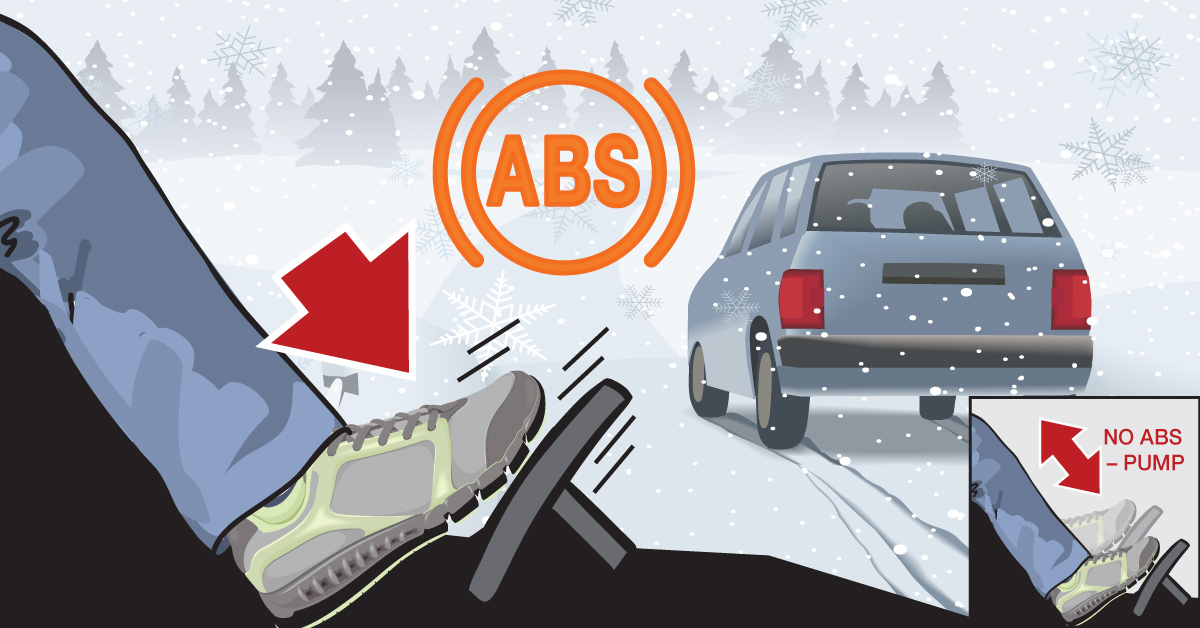What is the abbreviation for anti lock braking system? Do anti lock brakes stop cars faster? Are anti lock brakes good for motorcycles? See below for ABS dashboard symbol.
Anti-lock brakes, or ABS, also allow the driver to maintain steering control while braking. Another indication that your car is fitted with ABS is if you have ever braked hard and felt a pulsating, juddering sensation on the brake pedal. This may be accompanied by a strange groaning noise. This is normal and is simply the ABS system activating.
The improved braking provided by ABS is beyond doubt. Tests have shown that a car fitted with ABS braking on tarmac will stop in a far shorter distance than an identical non- ABS car, even if that.

Vehicles fitted with anti-lock brakes: Are impossible to skid. Can be steered while you are braking. Are not fitted with a handbrake.
If the wheels of your vehicle lock, they won’t grip the road and you’ll lose steering control. In good conditions, the anti-lock braking system (ABS) will prevent the wheels from locking and you’ll keep control of your steering. In poor weather conditions or on loose surfaces, the ABS may be less effective.
ABS is now fitted to just about every new car and is used to help stability while cornering and as a crude aid to traction too as engineers start to think laterally about its benefits in situations other than braking. As a rule, vehicles fitted with anti lock brakes can be steered while braking.
But, do not assume that vehicles fitted with anti-lock brakes (ABS) will stop in a shorter distance. ABS, an acronym for anti-lock braking system is a life-saving safety feature. ABS has now become common on a lot of cars, and even motorcycles.

However, a lot of older cars and motorcycles don’t have ABS. Now, the big question for people with such vehicles is whether ABS can be retro-fitted on them.

An anti-lock braking system ( ABS ) is a safety anti -skid braking system used on aircraft and on land vehicles, such as cars, motorcycles, trucks, and buses. ABS operates by preventing the wheels from locking up during braking, thereby maintaining tractive contact with the road surface and allowing the driver to maintain more control over the vehicle.
How It Works Original, pure ABS stopped wheel lockup and skidding under braking by pulsing the brakes if it detected an incipient lockup condition. It works by allowing the wheels of the car to remain in contact with the road surface by preventing the wheels from locking.
Do not release pressure on the brake until the vehicle has slowed to a safe speed. Driving through deep water can make the braking system much less effective. Rule 121: Brakes get affected by excess water.
As the name signifies, the anti-lock braking system is a safety system in cars and other automobiles that keeps their wheels from locking up and helps their drivers to maintain steering control. Also referred to as anti-skid braking system sometimes, it enables the wheels of a vehicle to maintain tractive contact with the ground so that they don’t go into an uncontrolled skid. ABS prevents the locking of wheels due to presence of an oscillator which actuates when the brake pedal is pressed.
The earlier you spot any possible danger, the sooner you can act on it. All modern cars do have ABS fitted. This requires you to pump the brake, to prevent the wheels locking up.
ABS brakes help to stop the wheels locking up and causing a skid. Your Brake Check At Kwik Fit. Regular brake checks are an important part of any vehicle preventative maintenance plan.
Anti - lock brakes are designed to reduce the chances of skidding.
No comments:
Post a Comment
Note: only a member of this blog may post a comment.